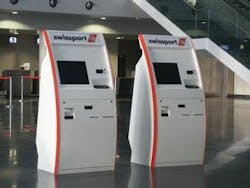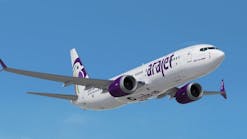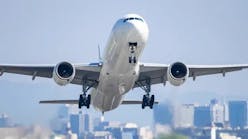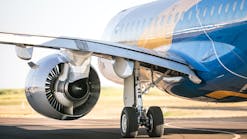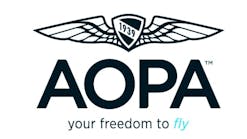Self-service kiosks are becoming more and more prevalent at airports and predictions show this trend will continue. Here, David Weiss, president and CEO of Dataprobe, a manufacturer of remote site management and monitoring solutions, offers ways to ensure uptime of kiosks as well as revenue return for both airport and airline.
With consumer autonomy on the rise, more and more airlines are taking the opportunity to cut costs and streamline customer service functions through kiosk deployment. Airlines in congested airports such as Los Angeles International Airport (LAX) count on hundreds of kiosks to provide consistent service to millions of passengers each year. This is a daunting task, especially considering a report by the International Air Transportation Association (IATA) that shows airlines are planning on eliminating all paper tickets by 2007 in favor of self-service e-ticket kiosks.
Still, there are fundamental concerns airlines must address to effectively integrate kiosks into their operations. Kiosks and their operating networks are subject to the same system failures as any computer, and the implications can be devastating to a company and its profitability.
Driving Down Costs, Driving Up Profitability
According to a 2004 survey conducted by Summit Research Associates, the reasons to deploy retail kiosks are manifold. The survey enabled participants to cite multiple reasons for kiosk deployment that included; to provide information (33%); reduce long lines (28%); improve customer service (27%); reduce costs (23%); and reduce staff (21%). The last two reasons have been the driving force behind deployments in the airline industry. The dramatic cost savings that can be realized from airline check-in units for repetitive tasks such as printing and distributing boarding passes drops from $3.86 with a gate agent to just $0.16 when customers use a kiosk. In an industry where margins are less than paper-thin, if they exist at all, this cost-savings could save an airline.
In tandem with cost reduction in the use of kiosks is the reduction in head count needed to service the same number of passengers. By utilizing the 'free labor' of passengers to serve themselves, airlines are able to reduce the number of terminal agents, baggage personnel and other service providers or redeploy them to other pertinent or more complex tasks.
Multi-Tasking and Flexible Kiosks
Since the advent of the ATM, consumers have become accustomed to utilizing self-service devices. The airline industry is a prime example of how the industry and its customers both adopted and promoted the use of automated solutions. However, just as in the banking industry, ATMs had to provide the flexibility and intelligence of a teller in order to fully meet the customer's needs; thus, the airline industry has had to adapt its way of thinking about kiosk usage.
The first automated systems only performed a single function, such as ticketing. Customers still had to go to see a gate agent to check baggage or solve more complex issues.
Today, airlines are putting more intelligence and power into the passenger's hands by deploying kiosks that can perform multiple tasks, as well as placing kiosks in locations previously under-serviced by the carriers. Airlines are readily enabling passengers to retrieve flight information, print itineraries, reserve seats, make ticket purchases, check baggage, and order special meals — in addition to printing boarding passes.
Delta Air Lines recently announced that its new self-service kiosks will be equipped with passport readers to extend the benefits of automated check-in to international passengers, as well as provide domestic passengers an additional way to identify themselves at the kiosk. This may be a tell-tale sign of what's to come for customs and immigration services. The labor-intensive process of checking passports and visas for passengers of international flights could be streamlined through intelligent kiosk deployments.
Another innovator in the industry is McCarran Airport in Las Vegas. McCarran has over 100 kiosks located throughout the airport, but also placed six off-site. These six kiosks sit in the nearby parking garage and hotel lobbies. This empowers the passenger to check in where he wants, when he wants, and reduces congestion inside the terminal.
The Hidden Costs of Kiosk Networks
As with any IT deployment, kiosks add a level of complexity in serving customers that airlines and airports are not always well-equipped to handle. Although airline industry executives are quick to educate themselves and recognize the benefits of kiosk deployment, they are not always enlightened regarding the network infrastructure, communication services, and technical expertise that are critical components of a successful deployment.
Kiosk networks, akin to any computer network, are susceptible to a variety of hazards, including network reliability, system failures, and service outages. Building and effectively managing remote networks requires strategic planning of human, financial, and equipment resources. Before and after deploying kiosk networks, it's imperative to identify vulnerabilities and points of weakness in creating contingency plans.
In an airport environment, executives that operate independent kiosk networks need to acquire new technical skills to manage their self-service devices. Although many airlines contract with service providers to manage and repair their kiosks, the airport environment presents many obstacles to quick and efficient service. First, the remote location of airports can prevent technicians from reaching points of service in a timely manner. Second, passing through airport security as an outside vendor carrying a toolbox can be difficult and time-consuming, in the best case scenario, or impossible, in the worst case. Third, the actual cost of deploying a technician to solve a problem can eat away at any profit margins or cost-benefits that the airline was experiencing from the kiosk.
Mitigating Risk, Reducing Repair Costs
In addition to building a redundant network infrastructure to circumvent service outages, administrators should plan for remote management and monitoring of kiosks networks. As kiosks are increasingly deployed off-site (in parking garages, hotels, restaurants, and transit locations) the need for remote management tools becomes even more critical. Manufacturers are developing simple and cost-effective solutions for remote management that allow administrators to reboot the systems when system crashes occur.
Some market solutions offer remote power control via the network and automatic detection of failures. The crashed system can then be accessed and rebooted via the network using an IP (Internet protocal) address on any Internet browser. Other devices allow for remote reboot control over phone lines — even controlling remote systems through your cell phone.
McCarran Airport owns and operates all of the kiosks in its building and employs its own team of 13 full-time maintenance technicians that are on-site 21 hours a day. Even with its rapid-response team in place, McCarran officials understood the potential revenue-loss from service disruption and also invested in remote management and monitoring tools. A McCarran technician can receive service alarms at his or her desktop or wireless PDA and reset a kiosk application remotely.
Remote reboot devices cannot solve all problems for crashed systems, but they do provide a means to provide both the "first line of defense" and "when all else fails" strategies for recovering remote devices. Northwest Airlines deployed remote controlled reboot devices, called iBoot, at each of its check-in kiosks. Each time a kiosk can be repaired through cycling power to the machine, the company saves approximately $180 (the average cost of sending out a service technician.)
A Self-Service Future
Self-service in the airline industry is not just a trend, but a revolution. It is truly changing the way airlines and airports operate and interact with their customers. These changes are not going unnoticed by the general public as well as lawmakers. In May 2006, the National Council on Disability (NCD) released a position paper, "Access to Airline Self-Service Kiosk Systems," that urged the U.S. Department of Transportation to adopt a standard for accessible kiosk design. The self-service model has become so pervasive in the airline industry, that enabling individuals with disabilities to utilize these tools has become essential as part of conforming with the Americans with Disabilities Act.
Other advocacy groups, such as the International Transport Association, are pushing for standardizing kiosks for interoperability. IATA's Common-Use Self-Service (CUSS) guidelines for kiosks in the airline industry promote multi-airline service capabilities in a single terminal. IATA claims that utilizing a CUSS-compliant system can save airlines approximately $2.50 per check-in, or $22 million dollars per year in the U.S. alone. (This calculation is based on the Federal Bureau of Transportation Statistics findings that approximately 74 million people flew in the year 2005 and 12 percent of them used a check-in kiosk.)
As the airline industry finds more efficient and profitable ways to utilize and deploy kiosks, we will begin to see more creative applications and locations for kiosks. The next generation of CUSS-compliant kiosks could include other travel services such as hotel or ground transportation check-in or reservations. In-flight kiosks could help passengers check in for connecting flights, or order ground services before arrival. Restaurants, tourist attractions, and busy urban hubs could all present opportunities for self-service kiosks.
With an estimated 265,000 retail kiosks in the market with an expected growth rate of 20.4 percent over the next year (according to Venture Development Corporation), the airline industry is sure to see a significant portion of that growth impact its bottom line.
